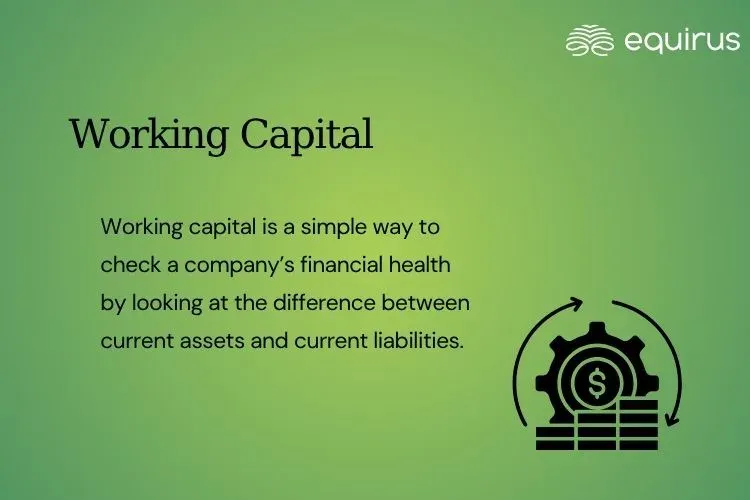Working Capital

Key Highlights
-
Working capital is a simple way to check a company’s financial health by looking at the difference between current assets and current liabilities.
-
Working capital is calculated by subtracting a company’s current liabilities from its current assets.
What is Working Capital?
Working capital is a simple way to check a company’s financial health by looking at the difference between current assets and current liabilities. It shows whether a business has enough cash and resources to pay its bills and keep things running smoothly.
Key Parts
-
Current Assets: It refers to resources a company owns that are either in cash form or can be easily converted into cash within a year.
-
Current Liabilities: These are debts or bills due within a year, like money owed to suppliers (accounts payable), wages, short-term loans, taxes, or unearned revenue (like customer deposits for future services).
How to Calculate It?
Working capital is calculated by subtracting a company’s current liabilities from its current assets.
-
Positive working capital: The company has more assets than debts, meaning it can easily cover bills and even invest in growth.
-
Negative working capital: It means a company’s current liabilities exceed its current assets, suggesting it may face challenges in meeting short-term financial obligations. This could be a sign of potential financial stress or liquidity issues.
Why It Matters?
-
Shows Financial Health: Working capital tells you if a company can handle its short-term debts without stress.
-
Keeps Things Running: Good management of cash, inventory, and payments ensures the business doesn’t run out of money or tie up too much cash unnecessarily.
-
Supports Growth: Extra working capital lets a company seize new opportunities or handle unexpected costs.
-
Spots Risks: Low or negative working capital can be a red flag, hinting at financial struggles or even bankruptcy risk.
